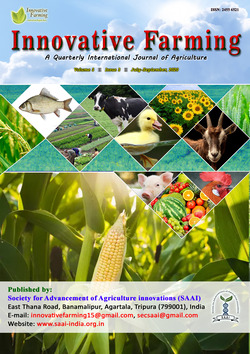
Domestic Waste Water Influence on V-1 (Morus spp) Mulberry Leaf Yield and Elemental Composition
Bharathi V.P.*
College of Sericulture, Chintamani, UAS(B), Karnataka, INDIA
Naveen D.V.
College of Sericulture, Chintamani, UAS(B), Karnataka, INDIA
C S. Kallimani
College of Sericulture, Chintamani, UAS(B), Karnataka, INDIA
Pallavi
College of Sericulture, Chintamani, UAS(B), Karnataka, INDIA
Ramakrishna Naika
College of Sericulture, Chintamani, UAS(B), Karnataka, INDIA
DOI: NIL
Keywords: Bioassay, Domestic waste water, Micronutrients, Rearing parameters, Toxicity
Abstract
Domestic waste water or grey water is commonly available source among waste water in every household. The influence of this water on mulberry leaf quality was experimented at College of Sericulture, Chintamani by using hostel waste water with primary sedimentation and the supernatant water collected was pumped into another storage tank and utilised for irrigation of mulberry garden. The experiment was set up in RCBD with 7 different treatments varying (recommended dose of Fertilizer) RDF under three replications and compared with borewell water irrigation and 100% RDF. The experiment showed clear significant differences among the treatments on the elemental composition of leaf. It has shown that good amount of nutrients accumulated in the leaf that was grown under Domestic Waste Water (DWW) along with 75% RDF applied to the soil compared to other treatments and also the control. All the three primary nutrients (N, P, K), secondary nutrients (Ca, Mg, S) and four micronutrients (Zn, Cu, Fe and Mn) showed similar trend. The study has thrown light that in low fertile soil (Zone 5-eastern dry) the above recommendation holds well. This reduces the excess accumulation of nutrients in the soil and thus toxicity can be avoided. The bioassay study was also done using the same mulberry leaf to confirm its utility for rearing. Here Effective rate of rearing and Defective cocoon percent showed the difference among the treatments. Complete 100% RDF along with DWW has shown some negative effect on these parameters. Hence looking into the leaf quality and rearing parameters 75% RDF with DWW proved to be recommendable and 50% RDF with domestic waste water for medium fertile soil.
Downloads
not found
